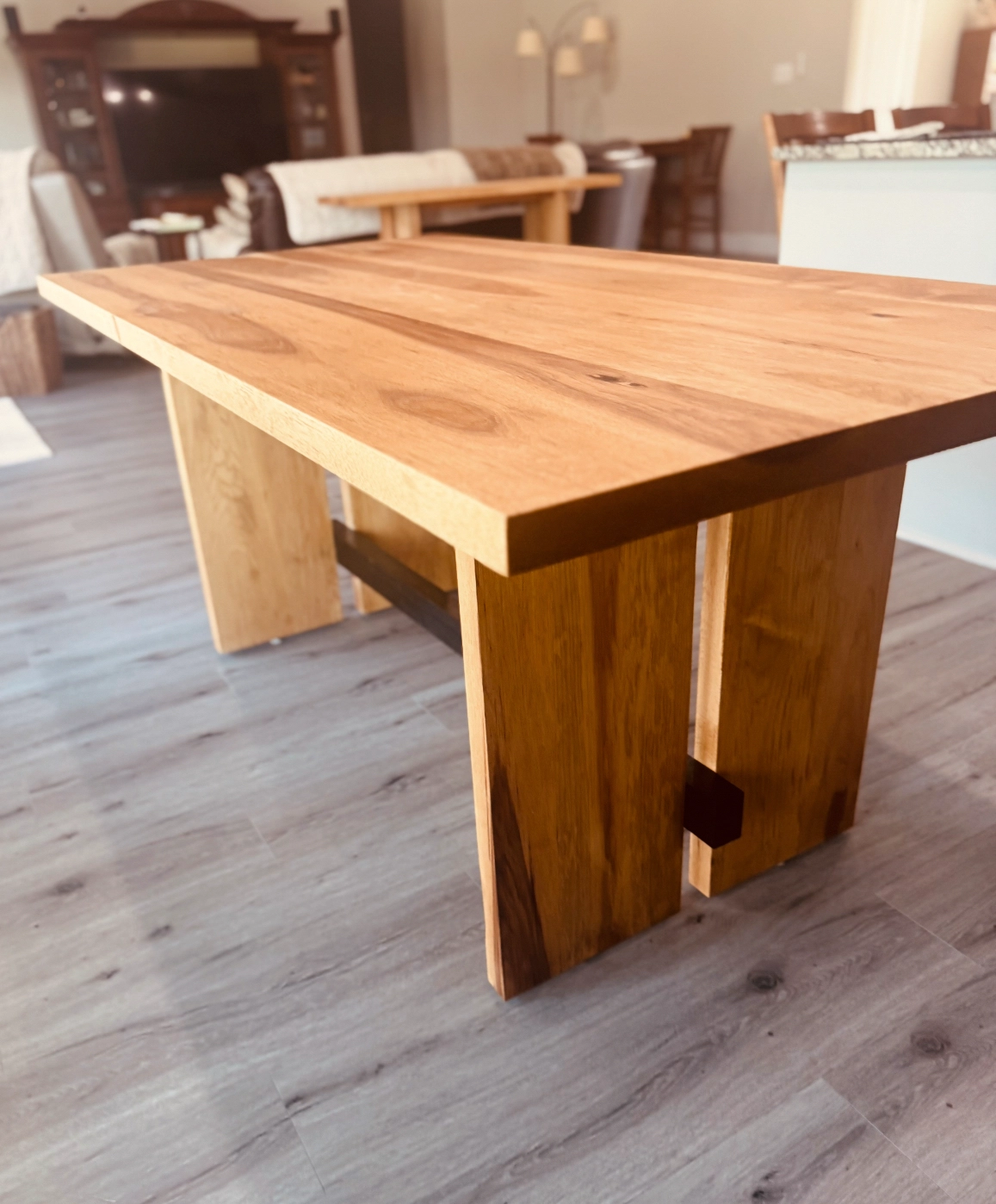The Case for Solid Wood: Why Heirloom Furniture Outlasts Fast Furniture
Introduction: The Disposable vs. the Lasting
Walk through any big-box furniture store and you’ll see endless rows of “affordable” options. They look sharp under bright lights, but within a few years drawers stick, edges chip, and finishes peel. Compare that to a solid wood piece built by hand: the weight, the warmth of real grain, the way joints fit together with intention. One is designed for a season. The other is built for a lifetime.
What’s Really Inside “Fast Furniture”?
Most mass-market furniture is made from particle board or MDF (medium-density fiberboard) covered with a thin veneer or laminate. These materials are:
- Prone to swelling with moisture
- Difficult (often impossible) to repair
- Held together with glue and staples rather than time-tested joinery
While the upfront cost may be low, the true cost comes when it needs replacing every 3–5 years.
Why Solid Wood is Different
Solid wood furniture is crafted from full planks of hardwood—walnut, oak, cherry, maple—carefully dried and selected for stability. The benefits are undeniable:
- Durability: Properly joined hardwood resists racking and wear, holding up to decades of daily use.
- Repairability: Scratches can be sanded, finishes refreshed, joints tightened. Solid wood can always be renewed.
- Beauty: Every grain pattern is unique. No printed laminate can match the natural depth and warmth of real wood.
- Longevity: Solid wood develops a patina over time, growing richer rather than fading.
Built as an Heirloom, Not Just Furniture
Heirloom doesn’t just mean “old”—it means something worth passing down. With careful craftsmanship, pieces are designed to move with your family through seasons of life. The table where you eat now can one day hold your grandchildren’s stories. That’s value no flat-pack box can provide.
What to Look for When Buying Solid Wood Furniture
Not all “wood furniture” is equal. A few tips when shopping:
- Ask about joinery: Look for mortise-and-tenon, dovetail, or dowel joints—not just nails and glue.
- Check the weight: Solid wood will feel substantial compared to hollow or veneer-covered options.
- Inspect the back and underside: True craftsmanship is finished all around, not just where it shows.
- Know the wood species: Each hardwood has distinct strengths—walnut for richness, oak for durability, cherry for warmth.
Why Handmade Matters
Machines can mass-produce, but handmade pieces carry something extra: time, care, and the vision of a craftsman. Each custom build at Tarae Woodcraft begins with conversation and ends with a piece tailored to your life. That intentionality is what separates “just furniture” from a personal heirloom.
Conclusion: An Investment that Pays Forward
Fast furniture fades. Solid wood endures. Choosing handmade woodcraft isn’t just about owning something beautiful today—it’s about investing in tomorrow’s memories. With proper care, these pieces don’t just last a lifetime; they create one.

